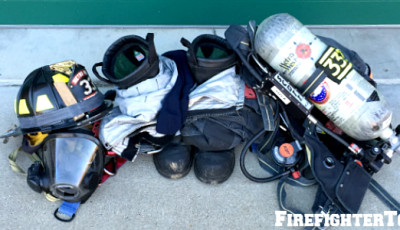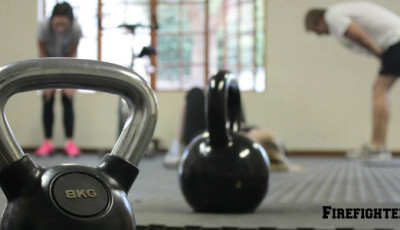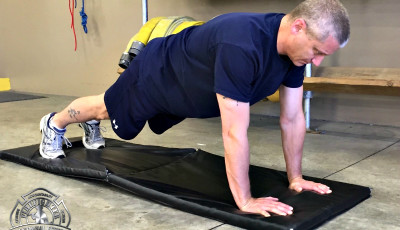Unconventional Exercises for the Firefighter – Part 1
Over the next few weeks we will take a look at unconventional exercises to increase your performance potential on the fireground and in your everyday life.
Whether you are new to exercise, just getting back into it, or have become bored with the same exercises; it can be hard choosing exactly what to do. After working out for the last 27 years on a regular basis, I too have become bored with the “same old thing”. I thought we would look at unconventional exercises to get you motivated. They can even help your performance on the fire ground, because you will have increased you endurance and your strength while having fun in the process.

Any set of stairs can provide a good workout. Stair workouts are especially good for those firefighters who have high rises in the response districts. If you SOP is like the one where I work then stairs are utlilzed depending on the high rise size and fire location.
Photo Courtesy: Buffy Schilling
Take the Stairs, Not the Elevator
Lets first look at one that isn’t so unconventional, stair climbing. Stair climbing increases muscular endurance, increases aerobic capacity, and increases power and strength in your legs. All of these are needed in fire and rescue operations.
Take a Test
Stair climbing is beneficial in training for the CPAT agility test which is part of most hiring processes for a career firefighter. This workout involves a stepper machine. You are on the stepper for 3 minutes and 20 seconds; wearing a 50 pound vest with 25 pounds added to your shoulders. You cannot hold on to the sides of the stepper. Training for this exercise can greatly help the outcome of the timed CPAT test.
The stepper to me is the hardest part of the test. You increase aerobic capacity, power and strength, but you also learn to have balance. Balance is very important in firefighting, especially when maneuvering on a roof, or just carrying all the equipment and gear that we need to operate with. Another idea is to find a set of stairs that isn’t being used by others consistently.
A group of us at work have been getting into climbing stairs together with the encouragement of our Battalion Chief. We do 10 sets of 7 flights. You can wear an air pack or just use your own body weight. Be sure to stretch either before or afterward. (We will touch on the importance of stretching in a later article). You can add in pushups, and sit ups alternating at each landing, to add interval training into the mix. You can time yourself to see how your performance has improved. The downside to stair climbing is that it can be hard on the knees,especially as we age, but this can be said about firefighting in general.
So what better way to train for those stairs we encounter, than to just do them, in a non-emergent way. You will be amazed on how well you feel after you do them.
Next week we will look at way to make push-ups fun, as well as possibly increasing the amount that you can perform. Remember form is always important when performing any exercise; not only to ensure improvement, but also for safety.
Part 1 of 3










Stairs are great, my crew and I try and head over to the university football stadium during our shift and run/climb the stairs one of our members can cover the entire football stadium on one tank of air he is a supper fit guy, another thing to think about is purchasing a home workout DVD system and then mixing that into our workouts, we have used P90X and Rip60 both are great workouts easy to do anywhere and you can hit the pause button if the tones ring out and hit it when you get back to the house. thanks for the article great advice.
Great advice!
i do stairs on a weekly basis, sometimes I’m able to get fellow firefighters to join in. I have found it is best when doing a high stair count and wearing full gear to use a stairwell with access to an elevator to return to the bottom floor. Walking down stairs, especially with extra gear/weight, is brutal on the knees and hamstrings/calves. Once I started using a building with an elevator it virtually eliminated the knee pain and stiffness in my (our) hamstrings/calves. Even after 150+ flight workouts.